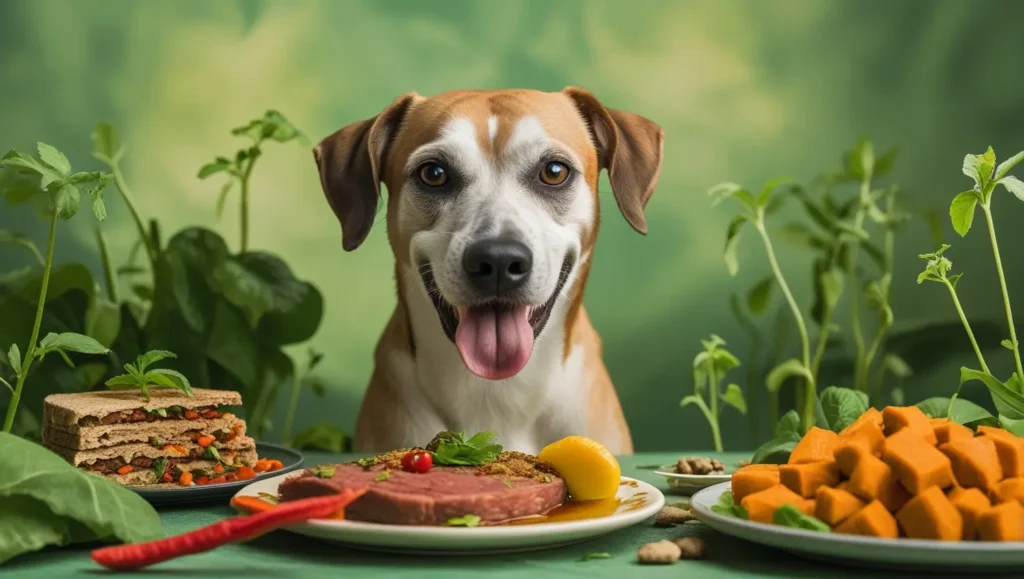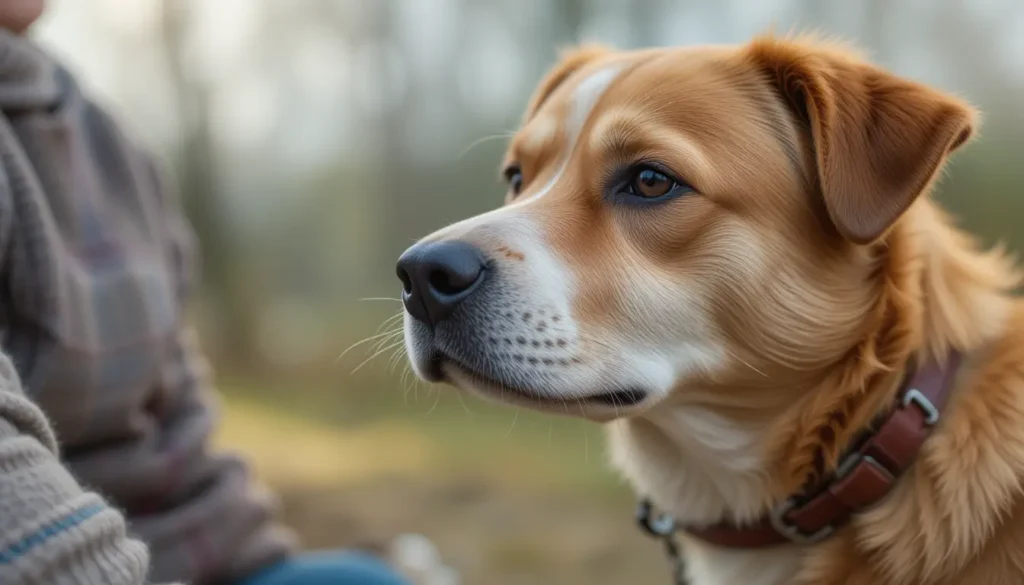Teaching your dog tricks is a fun and rewarding way. It strengthens bond between you and your furry friend. One of the most impressive tricks you can teach your dog is how to roll over. This trick engages your dog’s mind and body. It’s a great exercise for both physical and mental stimulation.
Why Teach Your Dog to Roll Over?
Roll over offers numerous benefits for your dog. It’s a valuable addition to your training repertoire.
Rolling over requires your dog to engage multiple muscle groups. This helps improve their coordination and flexibility. The movement involves twisting and turning. They are great for maintaining joint health and mobility. Over time, practicing this trick help keep your dog physically fit and agile.
Dogs are intelligent creatures. They thrive on mental challenges. Teaching your dog to roll over provides them with a fun way to exercise their brain. Problem-solving during training sessions stimulates their cognitive functions. This helps prevent boredom and reduces the likelihood of destructive behaviors. This trick transforms routine activities into engaging learning experiences.
Teaching roll over helps build trust between you and your dog. Dogs are naturally inclined to please their owners. Successfully learning a new trick reinforces their trust in you as their leader and trainer.
Furthermore, each small success boosts your dog’s confidence. As they master the roll-over trick, they’ll feel a sense of accomplishment. This new feeling translates into better behavior and increased enthusiasm for future training sessions.
Before teaching your dog to roll over, it’s essential that they’ve already mastered basic commands such as “sit” and “lie down.” These foundational skills provide the groundwork for complex tricks.
Rolling over builds upon these basics. It reinforces your dog’s understanding of obedience commands. By integrating tricks into obedience training, you create a seamless blend of discipline and fun.
What You’ll Need
To ensure that your training sessions are effective for both you and your dog, it’s important to have the right tools and mindset.
Treats are one of the most powerful motivators when training your dog. They provide instant gratification and serve as positive reinforcement for desired behaviors.
Use small, soft treats that your dog finds irresistible. Soft treats are ideal. They can be quickly consumed. These treats allow you to maintain the flow of the training session without long interruptions.
Don’t make your dog full too quickly. Smaller treats are better. Some dogs prefer certain flavors. Experiment to find what works best for your pup.
You need patience to keep your dog engaged during training session. Training takes time. Every dog learns at their own pace. Some dogs pick up the roll-over trick in a single session, while others may require several attempts over days or even weeks. Patience is key to ensuring that your dog feels comfortable and confident throughout the process.
If your dog doesn’t get it right away, avoid showing frustration. Instead, break the trick down into smaller steps. Celebrate incremental progress. Remember, the goal is to make learning a positive experience for your dog.
A quitter space is needed for better learning. Distractions hinder your dog’s ability to focus. Choosing a quiet, distraction-free environment allows your dog to concentrate fully on you and the task at hand.
A living room, backyard, or any space where your dog feels comfortable and secure is ideal. Avoid busy areas with lots of noise.
Dogs respond best to positive reinforcement techniques. It involves rewarding good behavior rather than punishing bad behavior. This approach fosters a positive association with learning and encourages your dog to repeat the desired action.
Combine verbal praise (“Good boy/girl!”), physical affection, and treats to reward your dog whenever they perform the correct action. Even if your dog only completes part of the roll-over motion, reward them for their effort. This will motivate them to continue trying and eventually master the full trick.
Step-by-Step Instructions: Teaching Your Dog to Roll Over
Teaching your dog to roll over requires patience, consistency, and a structured approach. By breaking the trick down into manageable steps, you can guide your dog through the process in a way that’s both fun and rewarding.

Step 1: Start with “Lie Down”
Before attempting to teach your dog to roll over, ensure they are comfortable with the “lie down” command. This foundational skill sets the stage for the rest of the trick.
Stand or kneel beside your dog and give the verbal cue “lie down.” If your dog has already mastered this command, they should respond by lying flat on their belly.
If they don’t know how to lie down yet, take some time to teach this command first.
To teach “lie down,” start with your dog in a sitting position. Hold a treat close to their nose. Slowly lower it toward the ground. As their head follows the treat, their body will naturally lower into a lying position. Once they’re fully down, say “good” or “yes,” and reward them with a treat.
Once your dog is lying down, immediately reward them with a treat and lots of praise. This reinforces the behavior. It helps them associate lying down with positive outcomes.
Starting from a lying-down position ensures that your dog is calm and ready to focus on the next steps of the trick. Rolling over directly from a standing or sitting position would be challenging. This could confuse your dog.
Step 2: Lure Your Dog onto Their Side
Now that your dog is lying down. It’s time to encourage them to shift onto their side. This step introduces the motion needed for rolling over.
Hold a treat close to your dog’s nose. They can smell it but not grab it just yet. Slowly move the treat toward their shoulder. Keep it close to their body. This movement will naturally cause your dog to turn their head and shift their body onto their side.
As soon as your dog starts to move say “good” or “yes” and immediately reward them with a treat. Repeat this step several times until your dog consistently follows the treat onto their side.
If your dog doesn’t follow the treat, try moving it more slowly. Otherwise use a stronger-smelling treat. Some dogs need extra encouragement.Be patient and keep practicing.
Shifting onto their side is the first part of the roll-over motion. By rewarding this behavior, you’re helping your dog understand that moving their body in this way leads to positive reinforcement.
Step 3: Encourage the Full Roll
Now, it’s time to encourage them to roll all the way over. This is where the full trick comes together.
Hold the treat near your dog’s nose again. But this time, move it in a circular motion toward their back. The goal is to get your dog to follow the treat with their nose. This will naturally cause their body to roll onto their back and then onto their other side.
If your dog rolls onto their back but doesn’t complete the full roll, reward them for that effort. Gradually increase your expectations by encouraging them to continue the motion until they’ve rolled all the way over.
Not all dogs will roll over completely on the first try. If your dog seems hesitant, break the movement into smaller steps.
First, reward them for rolling onto their back. Then, encourage them to roll further onto their side. Finally, reward them for completing the full roll.
Breaking the trick into smaller parts makes it easier for your dog to learn. Rewarding partial progress keeps them motivated and builds confidence.
Step 4: Add the Verbal Cue
It’s time to introduce a verbal cue. This will let your dog to perform the trick without relying on the treat.
As you guide your dog through the motion with the treat, say “roll over” (or another phrase of your choice) in a clear and consistent tone. For example, as you move the treat in a circular motion, say “roll over” while your dog follows the treat.
Practice this step several times over multiple sessions. After repeated exposure, your dog will begin to associate the verbal cue “roll over” with the action of rolling over.
Adding a verbal cue transforms the physical guidance into a command-based trick. This allows your dog to roll over without needing to use the treat every time.
Step 5: Practice Without the Treat
The final step is to phase out the treat lure and rely solely on the verbal cue. This ensures that your dog understands the command and can perform the trick independently.
Once your dog has mastered the roll-over motion with the treat, try asking them to roll over without holding a treat in your hand. Simply give the verbal command “roll over” and see if they respond. If they do, reward them with a treat from your pocket.
If your dog doesn’t roll over, go back to using the treat lure for a few more sessions. Gradually reduce your reliance on the treat until your dog can perform the trick solely based on the verbal cue.
Phasing out the treat teaches your dog to respond to the command rather than the presence of food. This makes the trick reliable and versatile.
Tips for Success During Training
Dogs have short attention spans. Aim for training sessions that last about 5–10 minutes. You can have multiple sessions throughout the day. But avoid overtraining.
Always conclude your training sessions with a success. If your dog struggles with a particular step, go back to something they’ve already mastered and end the session on a high note. This keeps your dog motivated and eager to learn.
Use the same verbal cues and hand signals every time you ask your dog to roll over. Consistency helps your dog understand what you’re asking for and speeds up the learning process.
Even small successes should be celebrated. If your dog only rolls halfway at first, reward them for their effort. Over time, they’ll gain confidence and improve their performance.
Teaching your dog to roll over is a fun and engaging activity. It strengthens your bond and provides mental stimulation for your pet.




